Benjamin: Beautiful, rebellious and radical
A new photo book explores the American underground musician and poet’s world through the lens of Michael Ackerman

Cabbagetown is an unusual name for a neighborhood. Situated southeast of Atlanta, it’s one of the oldest parts of the city, settled by dirt-poor job-seekers from Appalachia who built the old, narrow wooden houses that are now being swallowed up by rapid gentrification. Robert Dickerson (1960-1999) lived in one of those Cabbagetown houses. Better known as Benjamin, the rebellious poet and singer-songwriter fronted the band Smoke, which is how photographer Michael Ackerman met him. After a show, Ackerman was invited to the musician’s house for an all-night party and fell asleep in one of the rooms. “A few hours later I woke up, looked in his room and saw him asleep on the floor in front of his bed. Now, 27 years later, I try to remember how I felt seeing him laying there so fragile. I took a picture, picked him up in my arms and carried him to his bed. Then I went out into the daylight to discover Cabbagetown.”
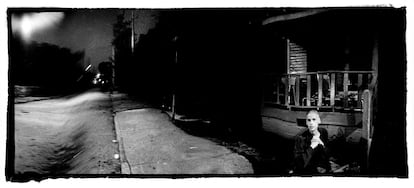

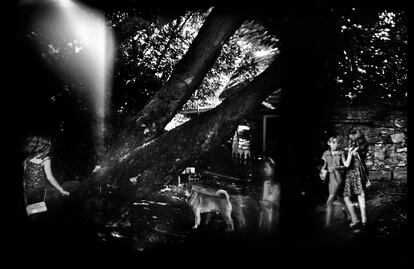

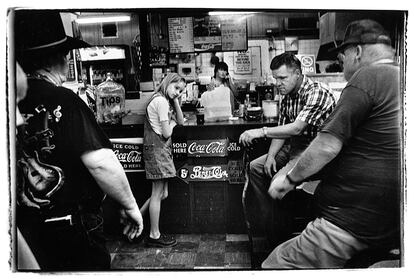
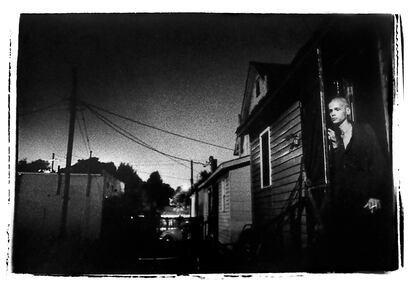
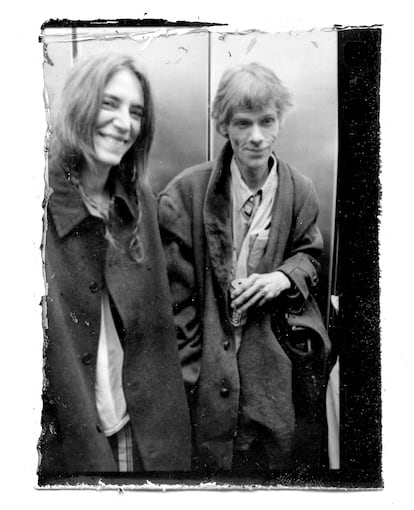


That first photo was followed by many more, leading to a close friendship. These photographs are now part of Smoke, a powerful photo book from French publisher l’axolotl that aims to revive the romantic and Dionysian spirit of the underground poet. Benjamin’s delicate beauty has been called angelic. His raspy voice evokes the profound melancholy of Tom Waits. His soulful ballads rival the melodic masterpieces of the incomparable Nick Cave. Ackerman’s book is also a tribute to old Cabbagetown, “a neighborhood where kids build go-karts, end up in jail at a young age, and watch their parents using lots of inhalants,” said Benjamin. It’s a step back in time through Ackerman’s spectral and hallucinogenic photos — dark, grainy and timeless, free of constrictions, beyond good and bad taste, beyond evil and righteousness.
Ackerman met Benjamin through filmmaker Jem Cohen, who with Peter Sillen directed the documentary Benjamin Smoke (2000). The film covers a 10-year arc, during which Ackerman frequently collaborated with the filmmakers. Many of the images included in the photo book are stills from the film. At the time, Ackerman had not yet published End Time City (1999), the radical portrayal of the Indian city of Benares (Varanasi), the holy City of Light on the shore of the Ganges. The book that solidified Ackerman’s reputation as a photographer takes a journey that oscillates between dreamlike wonder and unsettling darkness in a city where life is celebrated amid death. These same characteristics permeate Smoke, where tenderness intertwines with life’s hardships and human existence grapples with despair.

Born in Israel, Ackerman was raised in New York and now lives in Berlin. His interest in the vulnerable side of life stems from the perspective of a perpetual outsider. He sees photography as a way to reveal truths and find meaning in the unexpected. Smoke incorporates various elements to capture the passage of time: double exposures, dreamlike images, and personal artifacts like contact sheets and Polaroids. These visual elements, along with contributions from friends and collaborators, create a powerful portrait of Benjamin’s life. Ackerman includes pages with song lyrics from Benjamin’s notebook, moldy pictures from his photo albums, a blue letter and a red postcard from his friend Cat Power (Charlyn Marie Marshall), a drawing by Magdalena Franczak, as well as a hazy portrait by photographer Adam Cohen of a gravely ill Benjamin.
“This book is a family album with pages missing; a scrapbook of Benjamin’s Cabbagetown,” says a note by Cohen in Smoke. The musician “has left the heterosexual world behind. He speaks in beautiful circles… He talks about the octopus, his otherness, his intelligence and himself…” The singer-songwriter developed a fascination for drag when he was only nine. Patti Smith’s Horses was his gospel when the 18-year-old Benjamin moved to New York and got a job sweeping floors at the legendary CBGB punk-rock club. After returning to Georgia, he joined various bands, but didn’t get much recognition until he fronted Smoke as an openly queer musician. In 1994, he released his debut LP, Heaven on a Popsicle Stick. The following year, his album Another Reason to Fast received critical acclaim. Few were aware that Benjamin’s lifestyle and years of drug addiction had given him AIDS and hepatitis C. His idol Patti Smith came to one of his concerts, and in 1997, she invited him and his band to come on stage. Benjamin touched the sky for the first time. He died almost two years later, one day after his 39th birthday. For his musical epitaph, Smith wrote Death Singing: “Have you seen death singing / With a throat smooth as a lamb / Yet dry as a branch not snapping / He throws back his head / And he does not sing a thing mournful / Have you seen death singing.”
Sign up for our weekly newsletter to get more English-language news coverage from EL PAÍS USA Edition
Tu suscripción se está usando en otro dispositivo
¿Quieres añadir otro usuario a tu suscripción?
Si continúas leyendo en este dispositivo, no se podrá leer en el otro.
FlechaTu suscripción se está usando en otro dispositivo y solo puedes acceder a EL PAÍS desde un dispositivo a la vez.
Si quieres compartir tu cuenta, cambia tu suscripción a la modalidad Premium, así podrás añadir otro usuario. Cada uno accederá con su propia cuenta de email, lo que os permitirá personalizar vuestra experiencia en EL PAÍS.
¿Tienes una suscripción de empresa? Accede aquí para contratar más cuentas.
En el caso de no saber quién está usando tu cuenta, te recomendamos cambiar tu contraseña aquí.
Si decides continuar compartiendo tu cuenta, este mensaje se mostrará en tu dispositivo y en el de la otra persona que está usando tu cuenta de forma indefinida, afectando a tu experiencia de lectura. Puedes consultar aquí los términos y condiciones de la suscripción digital.











































